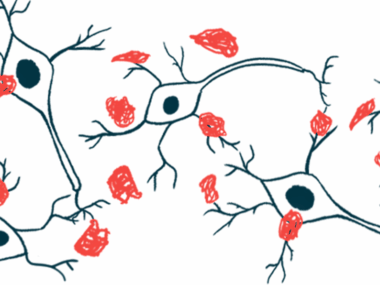Targeting healthy alpha-synuclein may limit its toxic spread in brain
Mouse study finds ASOs help to suppress protein's damaging propagation
Written by |

Lowering the levels of healthy alpha-synuclein, which is naturally found in the brain, helped to suppress the spread of this protein’s toxic clumps in the brains of a mouse model of Parkinson’s disease, a study reports.
The study, “Effects of local reduction of endogenous α-synuclein using antisense oligonucleotides on the fibril-induced propagation of pathology through the neural network in wild-type mice,” was published in Acta Neuropathologica Communications.
Although the causes of Parkinson’s aren’t fully understood, alpha-synuclein is thought to play a central role in driving disease progression. This protein is normally present in the brain, but in Parkinson’s it forms fibrils or clumps that are toxic to nerve cells.
Alpha-synuclein fibrils are thought to spread prion-like through brain
A fair amount of data suggests that alpha-synuclein fibrils can spread through the brain in a prion-like manner — in other words, when fibrils are present in one part of the brain, they prompt the protein in neighboring brain regions to also form clumps. As this fibril spread throughout the brain is thought to be a major driver of Parkinson’s progression, stopping it could, theoretically, be a useful treatment strategy.
A team of scientists in Japan used mouse models to test a novel approach for stopping the spread of alpha-synuclein fibrils. Rather than targeting the toxic protein clumps themselves, the researchers used antisense oligonucleotides (ASOs), a type of genetic medicine, to lower levels of endogenous (naturally occurring) alpha-synuclein.
ASOs are short, synthetic strands of genetic material designed to stick to specific parts of our body’s genetic code. In this case, their target is messenger RNA or mRNA, the molecule that carries instructions from DNA on how to build proteins. ASOs work by helping to “silence” the instructions that come from genes, decreasing the levels of their corresponding proteins.
“Currently, antibody drugs and vaccines targeting [alpha-synuclein] are under development … but their effects may not prevent the disease from progressing inside cells,” Tetsuya Nagata, MD, PhD, the study’s lead author and a professor in the department of neurology at Tokyo Medical and Dental University in Japan, said in a university press release. “In contrast, nucleic acid drugs like ASOs that specifically control intracellular levels of normal [alpha-synuclein], while also suppressing [disease-associated alpha-synuclein] propagation, could offer higher safety and efficacy.”
ASOs injected into mice brains interrupted the toxic protein’s spread
For their experiments, the researchers injected preformed alpha-synuclein fibrils into one side of the mice’s brains. As previously demonstrated, the fibrils without intervention eventually spread from one side of the brain to the other. But the scientists showed that using ASOs to deplete endogenous alpha-synuclein could interrupt this spread.
When fibrils were injected into one side of the brain two weeks before ASOs were injected into the same side of the brain, the brain’s other side remained free of these toxic protein clumps.
Even when ASOs were injected at the same time, or injected after preformed alpha-synuclein fibrils, a considerable inhibitory effect was seen.
Similar results were achieved when ASOs were injected into the opposite side of the brain from where the fibrils were injected.
“ASO injection into the seeding site prevented or ameliorated the initiation and propagation of [toxic alpha-synuclein fibrils] to both the site and other brain areas with neural connections to the site in a time-dependent manner,” the researchers concluded.
These findings, they added, “indicate that ASO-induced reduction in endogenous [alpha-synuclein] has preventive, disease-modifying, and curative potential” for Parkinson’s disease, as well as for atypical forms of Parkinson’s marked by these toxic protein clumps.
Researchers noted, however, that this study was fairly short term and done in mice, so further work is needed to translate this approach for human medicine.





